Does United need to do an external audit?
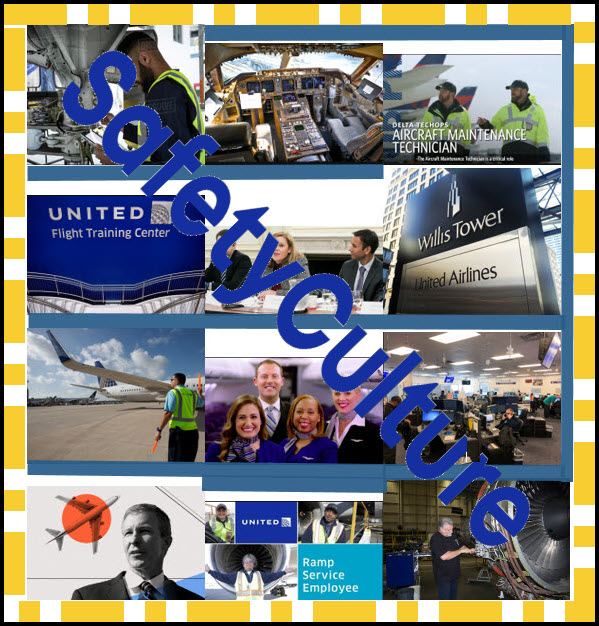
Below are three articles which report the incidents and regulatory consequences of incidents which United recently experienced. The first explains what restrictions the FAA has imposed in response. Number two story recites the opinions of the UA CEO and three experts. The last includes the list of actions which UA’s head of corporate safety is taking. Read them all carefully; what is the state of the United Safety Culture, in your opinion?
SAFETY CULTURE has been front and center in the aviation news. The oracle of this Gospel, and this approach must include something akin to religious fervor, FLIGHT SAFETY FOUNDATION’S DR. SHAHIDI, has recently proclaimed[1]:
“COMPLACENCY is a stealthy threat that can erode safety and quality unless it is actively COUNTERED WITH A ROBUST SAFETY CULTURE
The media has pointed out a string of incidents involving United Airlines- three of the stories are below. Statements from that carrier evidence the words of the Shahidi postulates, but examining the full context suggests that SAFETY CULTURE exists in United’s mind but is not part of its daily consciousness. It might be time for an external Safety Management System Audit.
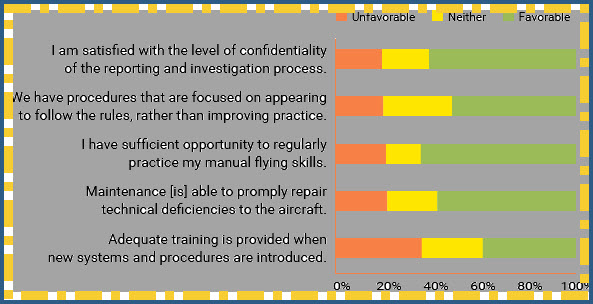
Some examples drawn from all three articles:
“In recent weeks, United Airlines aircraft HAVE EXPERIENCED AT LEAST 10 MAINTENANCE AND FLIGHT DIVERSION ISSUES, some more dramatic than others. While United CEO Scott Kirby issued a statement this week saying the issues were “all unrelated” and “have our attention and have sharpened our focus,” nervous fliers may be wondering if this “focus” is enough.”[2]
COMMENT: all the right words are in this quote, but
- “all unrelated”- the 10 events mentioned do include some common elements, i.e. hydraulics; however, a safety system is by definition interrelated. Somewhere in UA’s SMS should have caught similar errors in its internal reporting. The sorts of errors, that caused this problem, likely SHOULD have been reported through VDRP and/or operational data. A system approach looks across all MX activities- for example, a missing hydraulic connection with no dire consequences would have flagged, hypothetically, that the time allotted for this MX action.
- “have our attention and have sharpened our focus,”- the FOCUS of a well-functioning SAFETY CULTURE should not need an event to RESTORE the company’s attention. Ten events suggest that SAFETY has not been the POLESTAR of the team; lots of little things were predicates to hydraulic leak or oil warning light. Past attention might well have detected this potential fault.
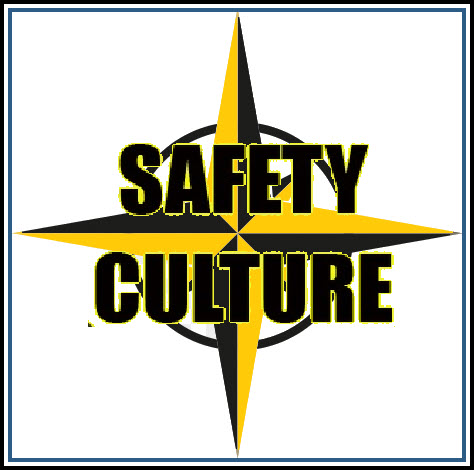
COMMENT: “I’m confident that we’ll learn the right lessons from these recent incidents and continue to run an operation that puts safety first. United Airlines CEO Scott Kirby… United also highlighted already PLANNED UPCOMING PILOT AND MAINTENANCE TRAINING PROGRAMS in the statement. Kirby noted that the airline will add resources to “supplier network management.”[3]
- “learn the right lessons” — #1 lesson should be for the CEO to ask whether the UA work environment really shares SMS’ discipline of risk management.
- Does the Board really understand what SMS means and do they really know whether it is working? Does the Board get data showing trends? If not, the individuals charged with the company’s strategic direction do not see these important trend lines.
- Is the executive team involved in SMS? Does the Chief Marketing Officer know that tighter turnaround times have safety limits- maybe quicker in/out will lead to more revenue, but at what cost? In hiring decisions, yes for sure on the hangar floor, but everyone should be included, does the job search criteria include safety attributes (at least attitude, but also physical measures (eye acuity)? Environmental policies, purchasing decisions, facilities’ designs, etc. all must be connected to SAFETY FOCUS; while the initial thought may be “why me” and that’s exactly the question.
- All levels of management should trace their jobs to safety.
- Is the relationship in the hangars and workshops open to reporting safety concerns? VDRP and similar systems depend on early identification of emerging trends. The supervisors usually have incentives for production; should not that reward also include a relevant safety performance measure.
- Most importantly, is the SMS team fully committed? Are their reviews thorough and timely? Do they provide feedback, plus and minus, that sends the right safety messages? Are there occasions that they underline the quintessential nature of the work—publishing systemwide reports, holding annual award ceremonies and providing the tools (cash, or more visibly patches or lapel pins that have meaning on the floor)?

- If everyone in the company does not know who the ACCOUNTABLE EXECUTIVE (AE) is that’s strong evidence that the Safety Culture is not really effective. That strong, able leader can foster an environment where employees are empowered to prioritize safety without fear of reprisal. Trust is a cornerstone of effective safety leadership. AEs must earn the trust of the employees, enabling smoother implementation of safety policies and obtaining necessary approvals. When trust exists, employees are more likely to comply with safety instructions and procedures. While safety managers focus on compliance with regulations, AEs must actively promote safety as a core value. They seek ways to enhance safety protocols and mitigate hazards proactively, rather than merely reacting to incidents.

- The AE and all of management must reinforce the involvement of all the unions in SAFETY CULTURE. Trust is paramount when using SMS; voluntary disclosures provide all with the data needed to address risks before they become a problem. One real or implied punishment destroys the value of this tool. Unions must participate in the analysis, the prioritization, the development of solutions and the implementation.
- ,United’s vice president of corporate safety,Sasha Johnson stated “WE HAVE A STRONG SAFETY CULTURE AT UNITED. Still, the number of safety-related events in recent weeks have rightfully caused us to pause and evaluate whether there is anything we can and should do differently” …“After all, SAFETY IS FOUNDATIONAL TO THE SUCCESS OF OUR AIRLINE AND WE CAN NEVER IT FOR GRANTED,” Johnson continued.” … “As you’d expect, we’ve STEPPED UP OUR INTERACTIONS WITH THE FAA recently and they echoed these sentiments. They agree that we need to take an ever close look at multiple areas of our operation to ensure we are doing all we can to promote and drive safety compliance.”
- COMMENT: Ms. Johnson’s statement was crafted for external consumption. Ten unexpected incidents suggest that UA’s SAFETY CULTURE at least needs improvement. Then listing stepping up its interactions with the FAA suggests that the airline, statutorily charged with meeting the highest levels of safety. Is not sure where the problem(s) lie—an effective SMS/SAFETY CULTURE would provide quantitative measures of why they have had these problems and where to address them. For example, the FAA has put a hold on UA pilot check rides; a vibrant SMS data collection would have identified deficiencies in the quality of the check ride assessment or in the “qualified” pilot out put. If the company truly was aligned with this advanced risk management paradigm, the remedial actions would be already moving and/or known.
It is all too easy for the C-Floor to be unaware of the modus operandi on the shop floor. Religious adherence to SMS should provide critical safety warnings from all levels of the company. UA is a sound airline and its current operations will be safe. That is not to suggest that its SAFETY CULTURE is perfect; an external Safety Management System Audit might help enhance this important atmosphere.

++++++++++++++++++++++++++++++++++
United Airlines Growth Halted By The FAA: No New Planes, Regulator Presence In Daily Operation
by Gary Leff on March 23, 2024
After the door plug blew off an Alaska Airlines Boeing 737 MAX 9 while inflight in January, aviation safety has become focal. The smallest incidents have been magnified.
It’s seemed like the Summer of the Shark which was the third most covered story of 2001 prior to 9/11, even though shark attacks were actually down compared to the previous year.
At the same time, an outsized number of these incidents have appeared to center around United Airlines. It hasn’t all involved Boeing aircraft, and where it has it hasn’t been new variants or new deliveries of Boeing aircraft. I flew with United three times this week and had zero concerns.
Nonetheless, it’s been broadly covered that THE FAA IS STEPPING UP INSPECTIONS OF UNITED’S OPERATION. United itself shared this with its employees, and made its employee note public. However the FAAs involvement is far greater than has been revealed publicly.

United has framed this as safety being important to Untied (it is) and therefore “we’ve stepped up our interactions with the FAA” that “they echoed these sentiments” about the importace [STET] of safety and “they agree” with United about the “need to take an even closer look” at the airline’s operation – it’s almost as if United is bringing in the government for help, they’ve asked for involvement, and the FAA has agreed to help. That’s one way of looking at this.
In fact, as aviation watchdog JonNYC was first to report, UNITED AIRLINES CANNOT BRING ANY NEW PLANES INTO REVENUE SERVICE AND UNITED IT APPEARS THEY CANNOT ADD ANY NEW ROUTES that they haven’t already announced. In other words, the FAA has halted all growth at United Airlines. They’ve also halted pilot certifications.
Depending on how long this lasts, it may have a material affect [stet]on the airline’s guidance about growth target and therefore earnings. Generally bureaucracies don’t move quickly when safety is involved. Once they’ve involved themselves, if they lift restrictions too quickly and there’s a subsequent incident, that reflects badly on the agency as much or more than the airline.
Last month regulators grounded a small fleet of United’s planes for stupid reasons, but there have also been incidents worth looking at – even though systems and procedures have worked even when things have gone wrong, and safety hasn’t been compromised.
+++++++++++++++++++++
What’s Going on With All the United Airplane Incidents? Aviation Experts Weigh In.
There have been at least 10 maintenance and flight diversion issues on United airplanes over the past few weeks.

“Safety is our highest priority and is at the center of everything we do,” United CEO Scott Kirby said in a letter sent to customers this week.
Photo by Chris Leipelt/Unsplash
In recent weeks, United Airlines aircraft HAVE EXPERIENCED AT LEAST 10 MAINTENANCE AND FLIGHT DIVERSION ISSUES, some more dramatic than others. While United CEO Scott Kirby issued a statement this week saying the issues were “all unrelated” and “have our attention and have sharpened our focus,” nervous fliers may be wondering if this “focus” is enough.
We looked into what happened in the recent United Airlines incidents, what the airline is doing to address them, and how this may influence your travel decisions.
United Airlines’ recent safety incidents
Below is a list of 10 United Airlines flight incidents reported in the news in the first three weeks of March. While Boeing has been in the hot seat ever since the plug door blew out on an Alaska Airlines Boeing 737-9 Max in January, it’s worth noting that these issues occurred across multiple aircraft types manufactured by Boeing and Airbus. No injuries were reported in any of these incidents, but one passenger from the Houston flight (mentioned below) stated that “people screaming and sending goodbye texts (and) emails mid-air will affect mental health for years to come.”
Here’s a recap:
- On March 4, there were two incidents,one on aBoeing 737-900 involving a United flight from Houston to Fort Myers, Florida, which returned to the airport for an emergency landing after THE ENGINE SUCKED IN PLASTIC BUBBLE WRAP AND BURST INTO FLAMES.
- The second incident was on a Boeing 757-300; a United flight from Honolulu to San Francisco declared an emergency WHEN A SINGLE ENGINE SHUT DOWN OVER THE PACIFIC. The plane landed safely at San Francisco International Airport (SFO), and passengers disembarked “normally,” according to a United Airlines statement quoted by the SF Chronicle.
- On March 7, a United flight on aBoeing 777-200from San Francisco to Osaka, Japan, safely made an emergency landing at Los Angeles after the AIRCRAFT LOST A TIRE, which fell and destroyed a parked car at SFO.
- On March 8, a United flight on aBoeing 737-8 Max from Memphis, Tennessee, to Houston SKIDDED OFF THE RUNWAY upon landing and ended up tilted askew on the grass beside the tarmac.
- That same day, a United flight on anAirbus A320from San Francisco to Mexico City diverted to Los Angeles after EXPERIENCING HYDRAULIC SYSTEM ISSUES.
- On March 9, a United flight on anAirbus A320from Chicago O’Hare to Salt Lake City returned to Chicago AFTER REPORTING MAINTENANCE ISSUES INVOLVING AN OIL WARNING LIGHT.
- On March 11, a United flight on a Boeing 777-300ER from Sydney, Australia, to San Francisco returned to the airport after TAKEOFF DUE TO A HYDRAULIC LEAK.
- On March 14, a United flight on an AirbusA320from Dallas to San Francisco experienced A HYDRAULIC LEAK prior to landing, with smoke visible near the landing gear. Also on March 14, aBoeing 737-800flight from San Francisco landed at Oregon’s Medford Airport missing an external panel.
- On March 18, a United flight on aBoeing 777-200 aircraftscheduled to fly from SFO to Osaka returned to the gate after a nearly two-hour wait on the tarmac, and passengers deplaned. The pilot announced, “RIGHT ENGINE NOT WORKING.”
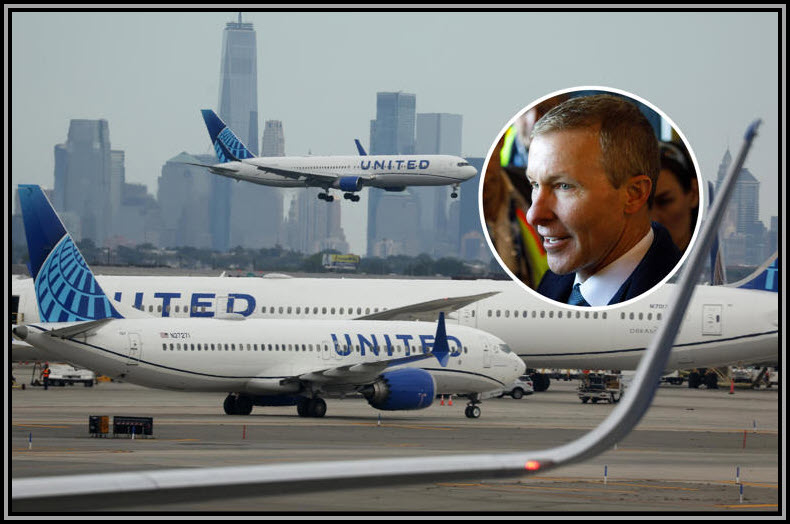
I’m confident that we’ll learn the right lessons from these recent incidents and continue to run an operation that puts safety first.
United Airlines CEO Scott Kirby
How United Airlines is addressing the issues.
Following the series of incidents, on March 18, Kirby sent a statement to customers trying to assure them that everything is okay.
“Unfortunately, in the past few weeks, our airline has experienced a number of incidents that are reminders of the importance of safety,” Kirby said in the statement. “While they are all unrelated, I want you to know that these incidents have our attention and have sharpened our focus.”
He added, “Safety is our highest priority and is at the center of everything we do. . . . I’m confident that we’ll learn the right lessons from these recent incidents and continue to run an operation that puts safety first.”
United also highlighted already PLANNED UPCOMING PILOT AND MAINTENANCE TRAINING PROGRAMS in the statement. Kirby noted that the airline will add resources to “supplier network management,” implying some blame may lay elsewhere.
Some passengers affected by the flight incidents felt United’s response has been limited and that it offered minimal reimbursements. For the flaming-engine situation in Houston, United gave passengers a $15 meal credit and $100 credit for future travel, which was raised to $200 after customers pushed back. “[Customer] service treated it like it was a mere flight delay, minimized and discounted the emotional toll it took on the passengers,” according to passenger Jonathan Boulahanis, who posted about his experience on X (formerly Twitter).
How these incidents might affect your travels
While United’s response to the incidents might appear underwhelming, industry experts aren’t panicking about safety issues regarding the airline.
“It’s understandable that the recent incidents and mechanical issues involving United aircraft are concerning to travelers, but it does not appear that there is any systemic problem,” Hassan Shahidi, CEO of the Flight Safety Foundation, an aviation research and safety advocacy organization founded in 1945, said via an emailed statement to AFAR. “Each event was unique, involving different aircraft types and unrelated to the other issues. All are under investigation by United technical and safety experts, who are determining what happened and why and will put in mitigations to prevent similar occurrences from happening in the future.”
“Very little of this [United situation] is significant,” Brian Sumers, industry analyst and founder of the Airline Observer newsletter, told AFAR. “Every day, airplanes return to an airport numerous times because of safety or maintenance issues. United has nearly 1,000 airplanes. . . . I would be surprised, frankly, if the airline didn’t have a couple of unscheduled landings every single day.”
One potential effect of the high-profile incidents may be increased flight delays. With the heightened publicity around recent issues, expect United and other airlines to take extra time to perform maintenance and safety due diligence prior to flight takeoffs, swap in new planes when needed, and potentially cancel flights more often due to an overabundance of caution to avoid any potential issues with an aircraft.
++++++++++++++++++++++++++++++
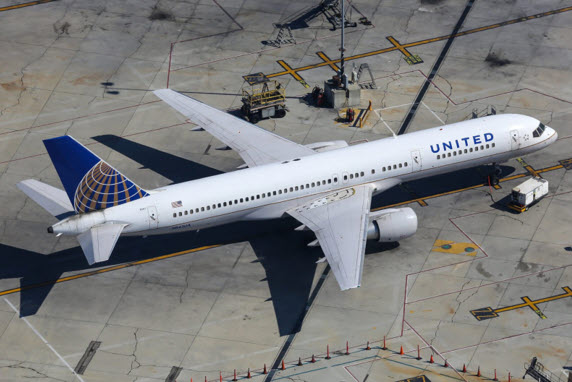
23RD MARCH 2024
United Airlines admitted on Friday that the Federal Aviation Administration (FAA) has made a highly unusual intervention in its daily operation and will scrutinise [STET] work processes at the carrier following a series of embarrassing and potentially dangerous mishaps over the last few weeks.

In an internal memo, United’s vice president of corporate safety, Sasha Johnson[4], said the Chicago-based carrier ‘welcomed’ the FAA’s heightened scrutiny and was “very open to hear from them about what they find and their perspective on things we may need to change to make us even safer”.
As part of the safety probe, the FAA has temporarily banned United from carrying out a variety of certification activities that the airline is normally licensed to carry out.
The airline did not detail what certification activities have been ‘paused’, but several sources claim this includes United’s ability to carry out its own check rides with new Captain’s and Line Check Pilot’s and these activities will now have to be carried out by FAA personnel.
Other unconfirmed reports suggest UNITED WILL BE TEMPORARILY BARRED FROM STARTING ANY NEW ROUTES which haven’t already gone on sale while new aircraft that are due to be delivered in the coming weeks might not be allowed to fly passengers until the FAA probe is complete.
The FAA’s highly unusual intervention followed a series of accidents and mishaps that have plagued United over the last few weeks. Some of those incidents include:
- February 6: the RUDDER PEDALS on a United Boeing 737 became ‘stuck’ as the Captain was making his approach to land. The NTSB is still investigating this incident.
- February 19: passengers on a United Boeing 757 flying from San Francisco to Boston noticed that the RIGHT-HAND SIDE FLAPS on the aircraft wing were ‘disintegrating’ during the flight.
- March 7: A TIRE FELL OFF A UNITED BOEING 777 as it took off from San Francisco International Airport. The tire hit and badly damaged several vehicles parked in an airport parking lot and the plane was forced to make an emergency landing.
- March 8: the LANDING GEAR of a United 737MAX collapsed after the plane rolled onto the grass at the end of the runway at Houston Intercontinental Airport.
- March 11: a United flight from Sydney to San Francisco had to turn back after suffering a ‘maintenance issue’ shortly after takeoff
- March 14: a United flight from Dallas Fort Worth, to San Francisco suffered a HYDRAULIC LEAK shortly before landing.
- March 15: a 25-year-old United Airlines Boeing 737-800 with 145 passengers onboard LOST AN EXTERNAL FUSELAGE PANEL mid-flight after departing San Francisco Airport.
In the leaked internal memo, Johnson wrote: “WE HAVE A STRONG SAFETY CULTURE AT UNITED. Still, the number of safety-related events in recent weeks have rightfully caused us to pause and evaluate whether there is anything we can and should do differently”.
“After all, SAFETY IS FOUNDATIONAL TO THE SUCCESS OF OUR AIRLINE AND WE CAN NEVER IT FOR GRANTED,” Johnson continued.
“As you’d expect, we’ve stepped up our interactions with the FAA recently and they echoed these sentiments. They agree that we need to take an ever close look at multiple areas of our operation to ensure we are doing all we can to promote and drive safety compliance”.
Johnson warned staffers to expect an INCREASED FAA PRESENCE across the operation in the coming weeks as federal investigators begin to review United’s work processes, manuals and maintenance facilities.
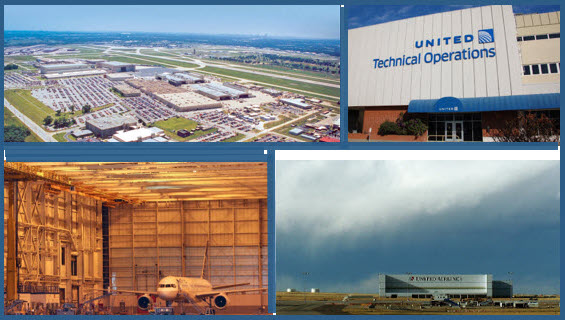
++++++++++++++++++++++++++++++++++
[1] Apologies for repeating this quote from the last post, but its relevance and significance grows each day.
[2] What’s Going on With All the United Airplane Incidents? Aviation Experts Weigh In
[3] What’s Going on With All the United Airplane Incidents? Aviation Experts Weigh In.
[4] Before joining United in 2015, Johnson worked for more than a decade at the Federal Aviation Administration and with the Department of Transportation in various roles including chief of staff at the FAA; assistant to the secretary and director of public affairs, and press secretary at the DOT. In these roles, she developed a comprehensive understanding of the issues critical to aviation safety, honed by her work in crisis management with the FAA administrator and the DOT secretary.
++++++++++++++++++++++++++++++++++++